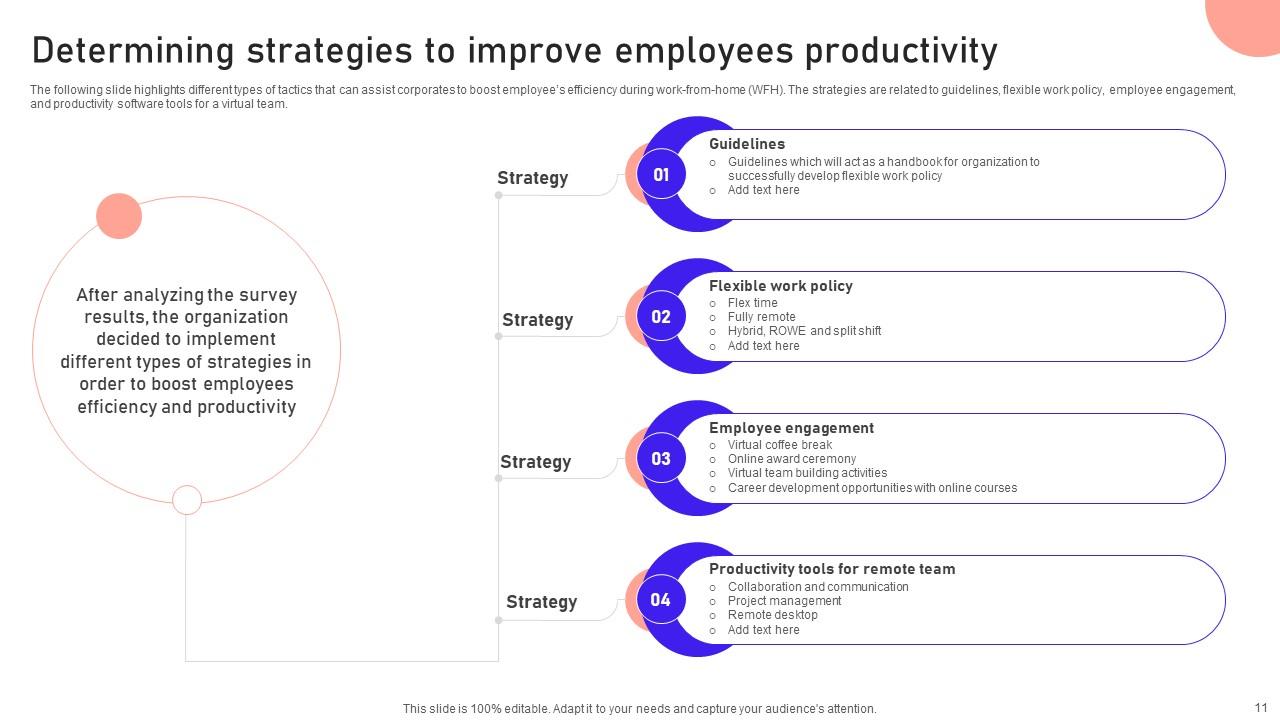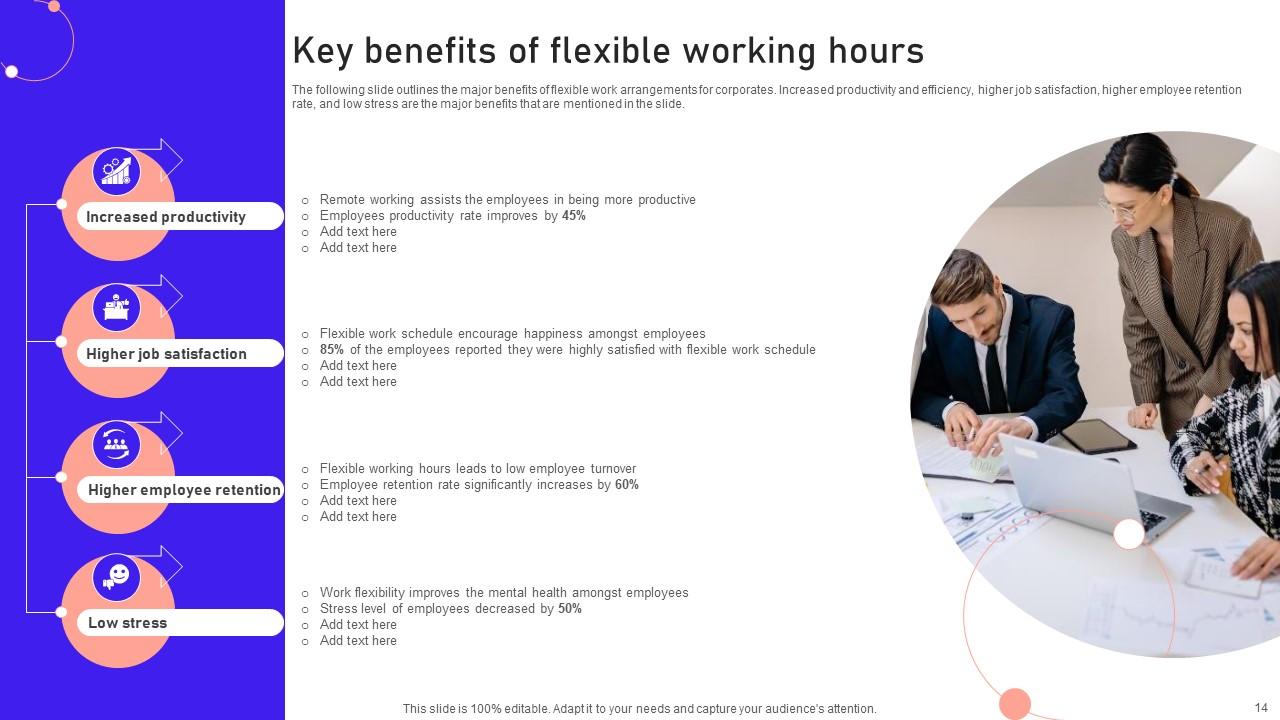Software as a Service (SaaS) boosts remote work efficiency by streamlining tasks. It offers tools accessible from anywhere, enhancing productivity.
Remote work has surged in popularity, making efficient tools essential. SaaS provides cloud-based solutions that simplify collaboration and task management. It enables teams to work seamlessly, regardless of their location. With SaaS, employees access software without complex installations. This ease of use saves time and reduces technical issues.
Plus, SaaS tools often integrate well with each other, offering a unified work environment. As a result, remote teams can communicate effectively and stay organized. This blog post explores how SaaS improves remote work efficiency, focusing on key benefits and examples.

Credit: www.slideteam.net
Introduction To Saas
Software as a Service (SaaS) has become a cornerstone in the digital transformation of businesses. Its significance has grown more in the era of remote work. SaaS solutions offer many benefits that improve productivity and streamline processes. This blog section will delve into the concept of SaaS and its importance in modern work environments.
What Is Saas?
SaaS stands for Software as a Service. It is a software distribution model in which applications are hosted by a service provider. Users access these applications over the Internet. Unlike traditional software, SaaS is not installed on local devices. Instead, it is available on-demand and is often subscription-based.
SaaS applications range from email services to customer relationship management (CRM) systems. They can include project management tools, data analytics platforms, and more. These applications are updated and maintained by the service provider. This ensures users always have access to the latest features and security updates.
Importance In Modern Work Environments
The shift to remote work has made SaaS tools more important. They enable employees to collaborate and communicate seamlessly. SaaS solutions can be accessed from anywhere, at any time. This flexibility is crucial for remote teams. It allows them to stay productive regardless of their location.
Key Benefits of SaaS in Remote Work:
- Accessibility: Access applications from any device with an internet connection.
- Scalability: Easily scale up or down based on business needs.
- Cost-Efficiency: Pay-as-you-go pricing models reduce upfront costs.
- Automatic Updates: Stay current with the latest features and security patches.
- Collaboration: Real-time collaboration tools enhance team productivity.
SaaS tools also integrate with other applications. This ensures a smooth workflow across different platforms. For example, project management software can integrate with communication tools. This creates a unified system that boosts efficiency.
The ease of deployment and use makes SaaS solutions ideal for modern work environments. They eliminate the need for complex installations and lengthy setup processes. This allows businesses to focus on their core activities without IT disruptions.
In summary, SaaS is a powerful tool that supports the demands of remote work. It offers flexibility, scalability, and cost-efficiency. These features are essential for businesses striving to stay competitive in a digital age.
Benefits Of Saas For Remote Work
Software as a Service (SaaS) offers many benefits that help improve remote work efficiency. By using SaaS, businesses can enhance productivity, reduce costs, and provide better access to important tools.
Flexibility And Accessibility
SaaS platforms allow remote workers to access tools from anywhere. This is because SaaS applications are typically web-based. Employees only need an internet connection to log in and start working.
This flexibility ensures that team members can work from home, coffee shops, or even while traveling. SaaS tools also support various devices, including laptops, tablets, and smartphones. This means employees can choose the device that suits them best.
Another advantage is real-time collaboration. SaaS platforms often come with features like shared documents, live editing, and team chat. These features help team members to stay connected and work together seamlessly.
Cost-effectiveness
SaaS is more affordable than traditional software. There are no large upfront costs for licenses or hardware. Instead, businesses pay a subscription fee, which is usually monthly or yearly. This model helps in managing budgets better.
Moreover, SaaS providers handle maintenance and updates. This means businesses do not need to invest in IT infrastructure or hire additional staff for software management. The savings can be significant over time.
Here is a simple comparison:
| Cost Aspect | Traditional Software | SaaS |
|---|---|---|
| Initial Cost | High | Low |
| Maintenance | Requires IT Staff | Handled by Provider |
| Updates | Manual | Automatic |
By choosing SaaS, companies can save money and allocate resources more efficiently. This makes SaaS an attractive option for businesses of all sizes.
Enhancing Collaboration
Remote work has increased the need for better collaboration tools. SaaS (Software as a Service) platforms offer solutions that enhance team collaboration. These tools streamline workflows, making remote work more efficient.
Real-time Communication Tools
Real-time communication tools are essential for remote teams. They enable instant messaging, video calls, and voice chats. These tools ensure that team members stay connected and can quickly share ideas.
Popular SaaS communication tools include:
- Slack
- Microsoft Teams
- Zoom
Slack and Microsoft Teams support channels or groups. This allows team members to discuss specific projects or topics. Zoom offers high-quality video conferencing, making virtual meetings seamless.
File Sharing And Storage
File sharing and storage are crucial for remote work. SaaS platforms provide secure and accessible storage solutions. Team members can upload, share, and collaborate on documents in real-time.
Key SaaS file sharing and storage tools include:
- Google Drive
- Dropbox
- OneDrive
Google Drive allows multiple users to work on a document simultaneously. Dropbox offers robust file-sharing options with strong security measures. OneDrive integrates well with other Microsoft products, making it convenient for Office 365 users.
These SaaS tools help remote teams stay productive and connected. They simplify collaboration, making remote work more efficient.
Boosting Productivity
Boosting productivity is a key goal for remote work. Software as a Service (SaaS) plays a vital role. It helps in managing tasks and improving efficiency. With SaaS, employees can focus on more important work. Let’s explore how SaaS boosts productivity by automating tasks and integrating with other tools.
Automation Of Routine Tasks
Routine tasks consume a lot of time. SaaS can automate these tasks. For example, scheduling meetings and sending reminders. This saves time and reduces errors. Employees can focus on creative work. Automation makes workflows smoother. It removes repetitive actions. SaaS tools like Trello and Asana help in task management. They automate the tracking of progress and deadlines. This keeps the team on the same page. Efficiency improves as a result.
Integration With Other Tools
SaaS platforms integrate with other tools. This creates a seamless workflow. For instance, Slack integrates with Google Drive and Dropbox. It allows easy file sharing and collaboration. Integration reduces the need to switch between apps. This saves time and reduces frustration. Zapier is another great example. It connects different apps and automates workflows. Employees can create custom integrations. This enhances productivity and makes work easier. Teams can work together more effectively with these integrated tools.
Ensuring Security
Ensuring security in remote work is crucial. Software as a Service (SaaS) solutions play a key role in this. They provide tools and protocols to safeguard data. Let’s explore how SaaS ensures security through various measures.
Data Protection Measures
SaaS providers use advanced data encryption techniques. This ensures your data is safe during transmission and storage. They also implement multi-factor authentication (MFA). MFA adds an extra layer of security, making it harder for unauthorized access.
Regular backups and disaster recovery plans are other crucial measures. These ensure data integrity and availability. SaaS solutions use cloud storage which offers enhanced security and accessibility.
Compliance And Regulations
SaaS providers adhere to strict compliance standards. These include GDPR, HIPAA, and other regional regulations. Compliance ensures that your data is handled responsibly. It also ensures legal protection for your business.
Regular audits and assessments are part of the compliance process. SaaS providers conduct these to maintain high security standards. This guarantees that your data remains secure and compliant.

Credit: www.goco.io
Scalability And Customization
Scalability and Customization are essential features of SaaS that boost remote work efficiency. These features allow businesses to grow and adapt without facing significant hurdles. SaaS solutions offer flexibility to meet the unique needs of each company. This helps in creating a seamless and efficient remote work environment.
Adapting To Business Growth
SaaS platforms can easily scale to match business growth. As a company grows, the need for more resources and capabilities increases. SaaS solutions can be adjusted to provide these additional resources without any hassle. This scalability ensures that the remote team can continue to work efficiently, even as the company expands.
For instance, a small startup might need only a few software licenses. As the team grows, they can easily add more licenses. This flexibility helps in maintaining smooth operations without disrupting workflow.
Tailored Solutions
Every business has unique needs. SaaS platforms offer customization options that cater to these needs. Companies can choose features and integrations that best suit their remote work environment. This helps in creating a more personalized and effective workspace for employees.
- Custom dashboards
- Specific integrations
- User-friendly interfaces
These tailored solutions ensure that remote teams have the tools they need to be productive. This customization also helps in reducing learning curves and improving overall efficiency.
Challenges And Solutions
Remote work brings both flexibility and hurdles. Understanding these challenges is the first step. Identifying solutions is the next. This section delves into common obstacles and effective strategies for using SaaS to improve remote work efficiency.
Common Obstacles
Remote work has several obstacles. Here are the most common:
- Communication Gaps: Miscommunication can slow down progress.
- Data Security: Protecting sensitive information is crucial.
- Task Management: Keeping track of tasks is challenging.
- Collaboration: Teamwork can suffer without face-to-face interaction.
Effective Strategies
Using SaaS can help tackle these obstacles. Here are some effective strategies:
1. Enhancing Communication:
- Use chat applications for quick messages.
- Schedule regular video calls for team meetings.
- Employ cloud-based tools for document sharing.
2. Ensuring Data Security:
- Use encrypted communication channels.
- Implement strong password policies.
- Regularly update software to avoid vulnerabilities.
3. Improving Task Management:
- Use project management tools for task tracking.
- Assign clear roles and responsibilities.
- Set realistic deadlines and priorities.
4. Boosting Collaboration:
- Use collaborative platforms for shared projects.
- Create shared calendars for transparency.
- Encourage regular feedback and check-ins.
| Obstacle | Solution |
|---|---|
| Communication Gaps | Chat apps, video calls, cloud-based tools |
| Data Security | Encrypted channels, strong passwords, software updates |
| Task Management | Project management tools, clear roles, realistic deadlines |
| Collaboration | Collaborative platforms, shared calendars, regular feedback |
Future Of Saas In Remote Work
The future of SaaS in remote work is bright. SaaS solutions are evolving to meet the needs of remote teams. These tools make remote work more efficient. They offer flexibility, scalability, and ease of use. Let’s explore the emerging trends and potential developments in SaaS for remote work.
Emerging Trends
SaaS tools are continuously adapting. Here are some emerging trends:
- AI and Machine Learning: SaaS platforms are integrating AI. They help automate routine tasks and provide data-driven insights.
- Enhanced Security: With remote work, security is crucial. SaaS providers are focusing on stronger security measures. These include encryption, multi-factor authentication, and regular updates.
- Collaborative Tools: Collaboration is key in remote work. SaaS tools are enhancing features like video conferencing, file sharing, and project management.
- Mobile Accessibility: More SaaS tools are mobile-friendly. This allows employees to work from anywhere, anytime.
Potential Developments
Future developments in SaaS for remote work look promising. Here are some potential advancements:
- Advanced Analytics: SaaS tools may offer more advanced analytics. They will help companies understand productivity patterns and improve workflows.
- Personalized User Experiences: SaaS platforms might use AI to provide personalized user experiences. This can increase user satisfaction and efficiency.
- Integration with Other Tools: SaaS tools may integrate more seamlessly with other software. This will create a unified work environment.
- Improved User Interfaces: User-friendly interfaces will become a priority. This will make SaaS tools easier to use for everyone.
The future of SaaS in remote work is about making work easier. These tools will continue to evolve, providing better solutions for remote teams.

Credit: www.slideteam.net
Frequently Asked Questions
What Is Saas In Remote Work?
SaaS, or Software as a Service, is a cloud-based solution. It provides software applications via the internet. This eliminates the need for on-premises installations.
How Does Saas Enhance Collaboration?
SaaS tools facilitate real-time collaboration. Team members can work together on documents and projects simultaneously. This boosts productivity and efficiency.
Can Saas Improve Remote Team Communication?
Yes, SaaS offers communication tools like chat and video conferencing. These tools streamline interactions and ensure clear communication. This helps remote teams stay connected and coordinated.
What Are The Cost Benefits Of Saas?
SaaS reduces costs by eliminating hardware and maintenance expenses. It follows a subscription model, making it budget-friendly. This allows businesses to scale efficiently.
Conclusion
SaaS tools greatly enhance remote work efficiency. They streamline communication and collaboration. Tasks become easier, faster, and more organized. Employees can access files from anywhere. This flexibility boosts productivity and job satisfaction. SaaS solutions also reduce costs for businesses. No need for expensive hardware or maintenance.
Security features keep data safe and secure. Overall, SaaS is essential for effective remote work. Embrace these tools for a smoother, more efficient workflow.